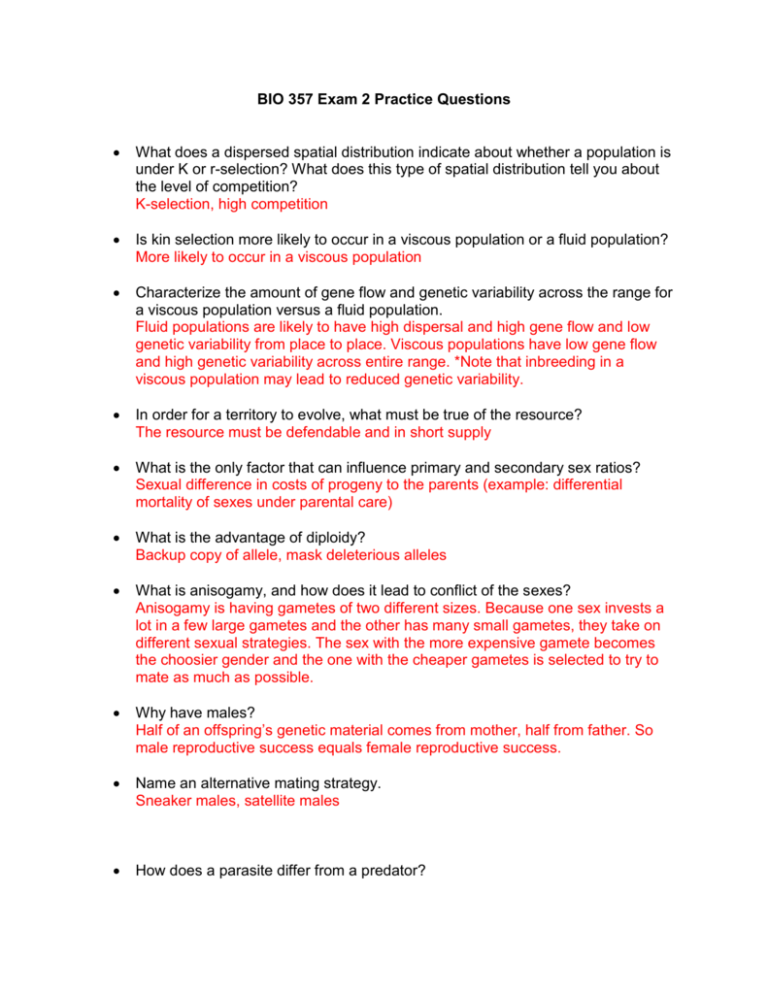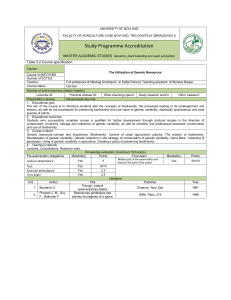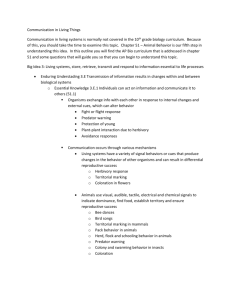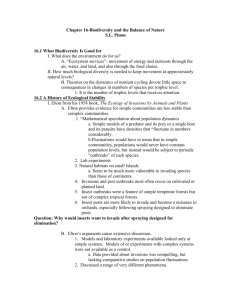Exam 2 Practice Questions
advertisement

BIO 357 Exam 2 Practice Questions What does a dispersed spatial distribution indicate about whether a population is under K or r-selection? What does this type of spatial distribution tell you about the level of competition? K-selection, high competition Is kin selection more likely to occur in a viscous population or a fluid population? More likely to occur in a viscous population Characterize the amount of gene flow and genetic variability across the range for a viscous population versus a fluid population. Fluid populations are likely to have high dispersal and high gene flow and low genetic variability from place to place. Viscous populations have low gene flow and high genetic variability across entire range. *Note that inbreeding in a viscous population may lead to reduced genetic variability. In order for a territory to evolve, what must be true of the resource? The resource must be defendable and in short supply What is the only factor that can influence primary and secondary sex ratios? Sexual difference in costs of progeny to the parents (example: differential mortality of sexes under parental care) What is the advantage of diploidy? Backup copy of allele, mask deleterious alleles What is anisogamy, and how does it lead to conflict of the sexes? Anisogamy is having gametes of two different sizes. Because one sex invests a lot in a few large gametes and the other has many small gametes, they take on different sexual strategies. The sex with the more expensive gamete becomes the choosier gender and the one with the cheaper gametes is selected to try to mate as much as possible. Why have males? Half of an offspring’s genetic material comes from mother, half from father. So male reproductive success equals female reproductive success. Name an alternative mating strategy. Sneaker males, satellite males How does a parasite differ from a predator? Predator kills its prey while a parasite does not necessarily kill its host. Predators are usually bigger than their prey whereas parasites are usually smaller. Fish or birds sometimes clump closely together in reaction to a predator nearby. What is this called? Adaptive geometry Why is kin selection considered pseudo-altruistic and not truly altruistic? What is Hamilton’s rule, and what does it mean for kin selection? Kin selection actually benefits the individual performing the act because it enables them to pass on some of their genes. Hamilton’s rule (rnb-c>0) states that the cost of an act must be less than its benefit times the relatedness times the number of others it helps in order to happen. What is exploitation competition? Is it a form of indirect or direct competition? Exploitation competition occurs when individuals compete over a resource. It is a form of indirect competition. What does optimal foraging theory predict about how niche breadth will change with decrease in resource availability? Niche breadth widens with decrease in resource availability What type of foraging style has low daily encounter rate, low metabolic expenditure, and low learning ability? Sit and wait predator What is the Hutchinsonian ratio? What does it refer to? 1.3:1 how similar two competitors can be (in this case predator mouthparts) without overlapping niches How does phenotypic variability change the range of resources exploited by a population? Increasing phenotypic variability increases the range of resources a population can exploit A certain moth has wing scale colors that look like bark so that when the individual rests on a tree trunk it is camouflaged. What is this called? Cryptic coloration










